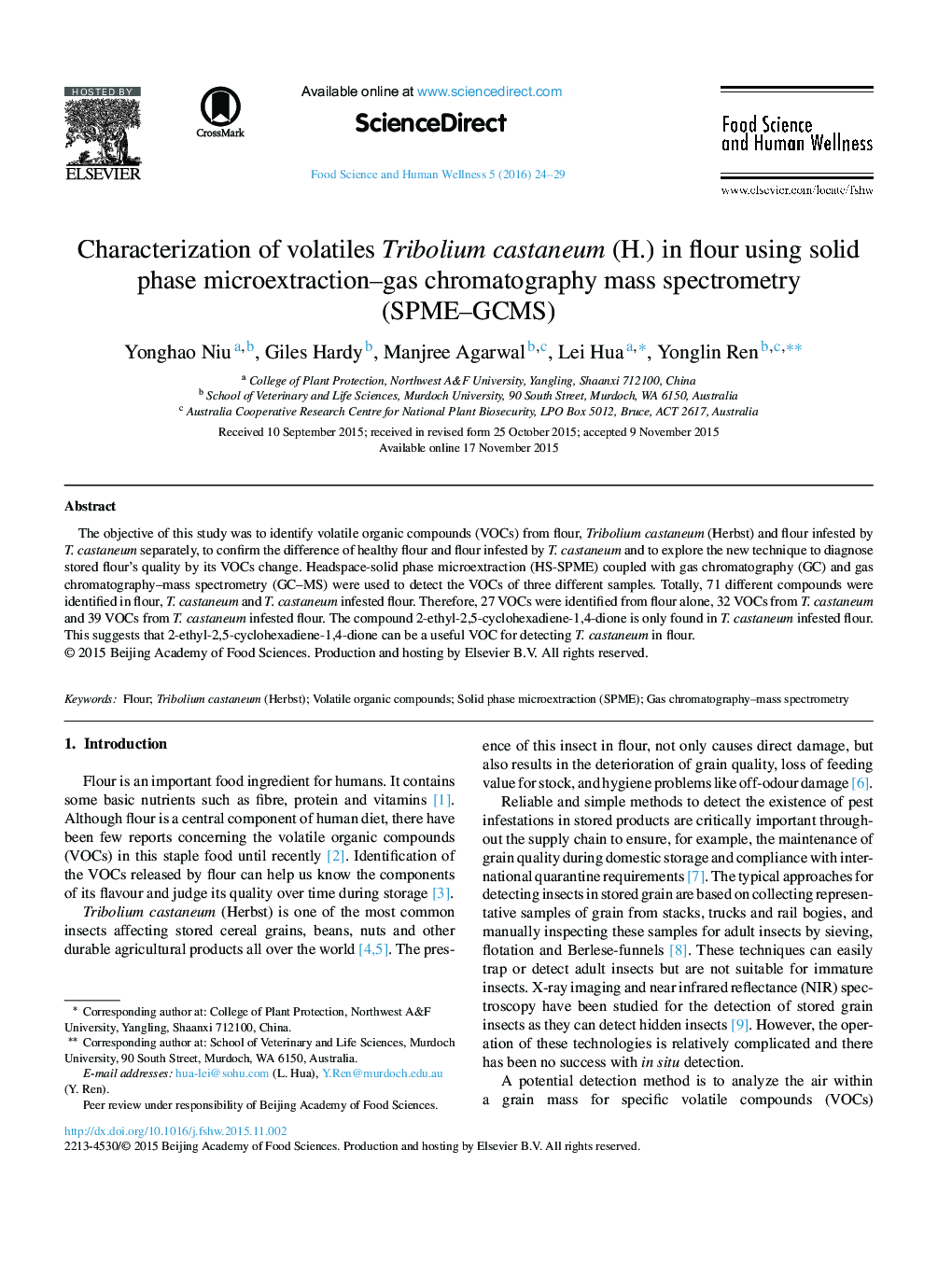| Article ID | Journal | Published Year | Pages | File Type |
|---|---|---|---|---|
| 2686598 | Food Science and Human Wellness | 2016 | 6 Pages |
The objective of this study was to identify volatile organic compounds (VOCs) from flour, Tribolium castaneum (Herbst) and flour infested by T. castaneum separately, to confirm the difference of healthy flour and flour infested by T. castaneum and to explore the new technique to diagnose stored flour's quality by its VOCs change. Headspace-solid phase microextraction (HS-SPME) coupled with gas chromatography (GC) and gas chromatography–mass spectrometry (GC–MS) were used to detect the VOCs of three different samples. Totally, 71 different compounds were identified in flour, T. castaneum and T. castaneum infested flour. Therefore, 27 VOCs were identified from flour alone, 32 VOCs from T. castaneum and 39 VOCs from T. castaneum infested flour. The compound 2-ethyl-2,5-cyclohexadiene-1,4-dione is only found in T. castaneum infested flour. This suggests that 2-ethyl-2,5-cyclohexadiene-1,4-dione can be a useful VOC for detecting T. castaneum in flour.
